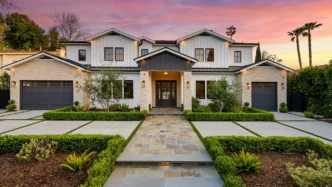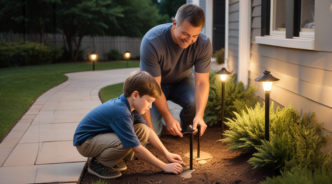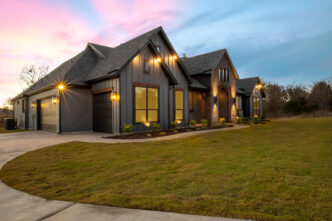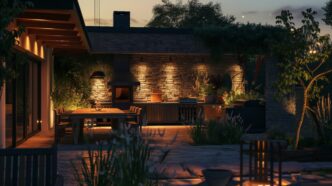Table of Contents: Landscape Lighting Color Temperatures
- What is Color Temperature?
- Matching Color Temperature to Landscape Elements
- Tips for Selecting the Right Color Temperature
- Advances in LED Technology and Color Temperature
- Color Temperature: Common Mistakes to Avoid
- Light Your Home with the Right Color Temperature
When it comes to landscape lighting colors, one of the most critical elements that can dramatically influence the mood and aesthetic of your outdoor space is choosing the best color temperatures for your surroundings.
Create a warm and inviting atmosphere, highlight architectural features, or add a touch of modernity to your garden with the right temperatures. Understanding color temperature variations will help you make informed decisions that align with your vision.
This guide covers the essentials of choosing the best color temperature to paint your landscape, ensuring that your outdoor spaces are not only well-lit but also beautifully styled.
What is Color Temperature?
Color temperature refers to the hue of a light source and is measured in Kelvin (K). The best Kelvin for outdoor lighting depends on the mood you want to create. For warm, inviting surroundings, 2700K-3000K is ideal, while 3500K-4100K works well for balanced, natural light. For a modern, vibrant look that effectively highlights details, 5000K or higher is recommended. Here’s how different ranges—from warm to cool tones—affect the ambiance:
- Warm White (2700K-3000K): Resembles the cozy glow of incandescent bulbs, casting a yellowish hue that is perfect for creating a relaxing and intimate environment.
- Neutral White (3500K-4100K): Offers a balanced white light, ideal for spaces where a natural light effect is desired without the yellow or blue tint.
- Cool White (5000K-6500K): Produces a bright, crisp light with a bluish tone, often used in modern settings or to highlight details in the landscape.

The Importance of Choosing the Best Color Temperature in Landscape Lighting
Your choice in color temperature for outdoor lighting can significantly impact the atmosphere of your outdoor spaces.
Determining the best color temperature for outdoor lighting can significantly impact the feel of your outdoor space. For example, understanding 2700K vs 3000K landscape lighting differences can help you achieve the exact look you want.
Warm lights (in the 2700K-3000K range) create a cozy, inviting environment for social areas like patios and pathways. Cool lights (in the 4000K-5000K range) are an excellent choice for highlighting textures and architectural details that add a modern brilliance to your landscape. A thoughtful selection of outdoor light temperatures enhances your property’s mood and visual appeal.
Matching Color Temperature to Landscape Elements
Choosing the right color temperature is crucial for achieving the desired ambiance in your landscape lighting. However, several common mistakes such as overly harsh lighting and ignoring the surrounding environment can undermine your efforts.
Let’s explore what colors are better for outdoor lighting and why you’ll want to avoid these pitfalls to ensure your outdoor space looks its best.
Patios and Decks: 2700K-3000K (Recommended Temperature)
Warm white lighting is popular for social areas like patios and decks. Why? Because warm light temperatures foster a comfortable and cozy atmosphere for evening gatherings, dining, or simply unwinding after a long day.
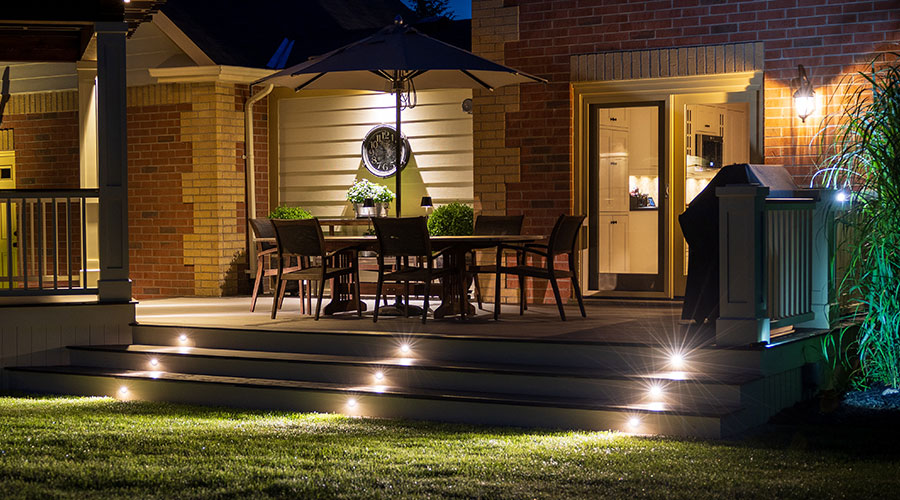
Garden Beds and Foliage: 2700K-3500K (Recommended Temperature)
To highlight the natural greens of plants and flowers, warmer color temperatures for these outdoor lighting areas work best. They enhance the colors and textures of the foliage, making your garden look lush and vibrant.

Pathways and Walkways: 3000K-3500K (Recommended Temperature)
A slightly warmer neutral white light enhances visibility without overpowering the natural beauty of your garden. It creates a safe and inviting passageway while complementing the surrounding greenery.
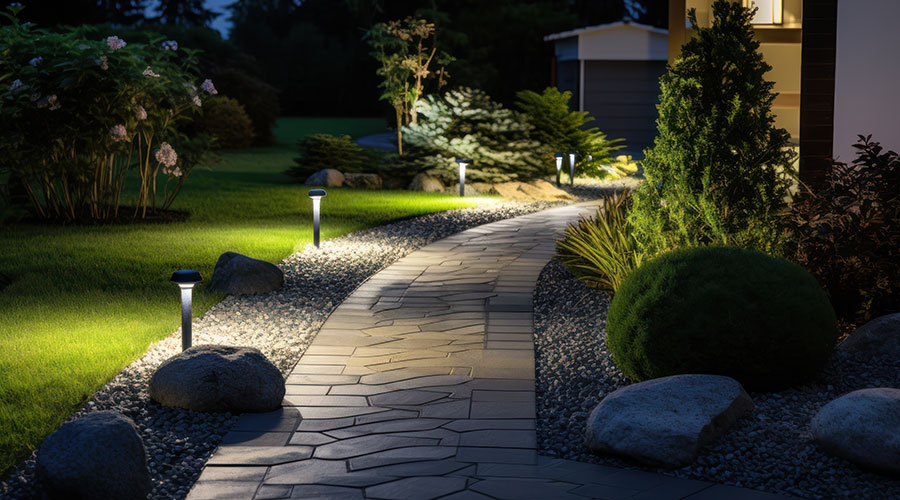
Water Features: 3500K-5000K (Recommended Temperature)
Cool white lighting can add a sparkling, almost ethereal quality to water features such as fountains, ponds, or waterfalls. The cool tones reflect off the water, creating a mesmerizing effect that draws the eye.
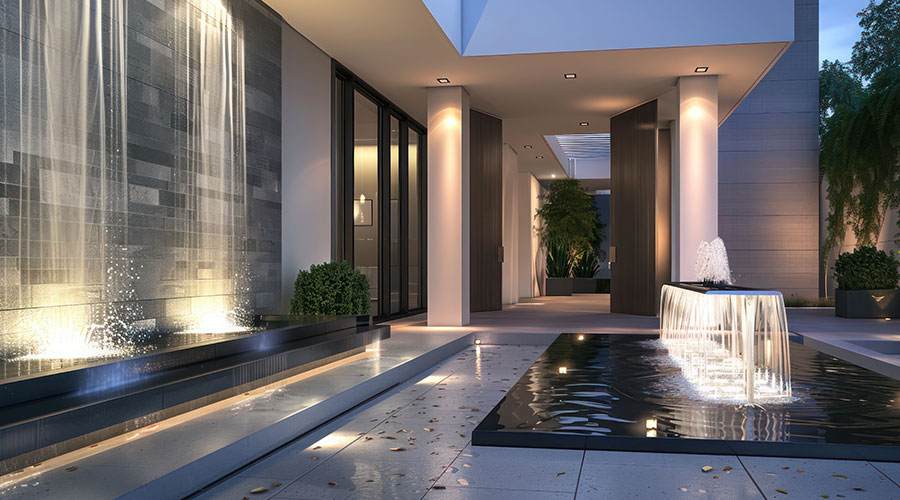
Architectural Features: 4000K-5000K (Recommended Temperature)
To emphasize the details of stonework, statues, or modern architectural elements, cool white light is the best color for outdoor lights in these areas. It adds sharpness and clarity, ensuring that every detail is noticed.
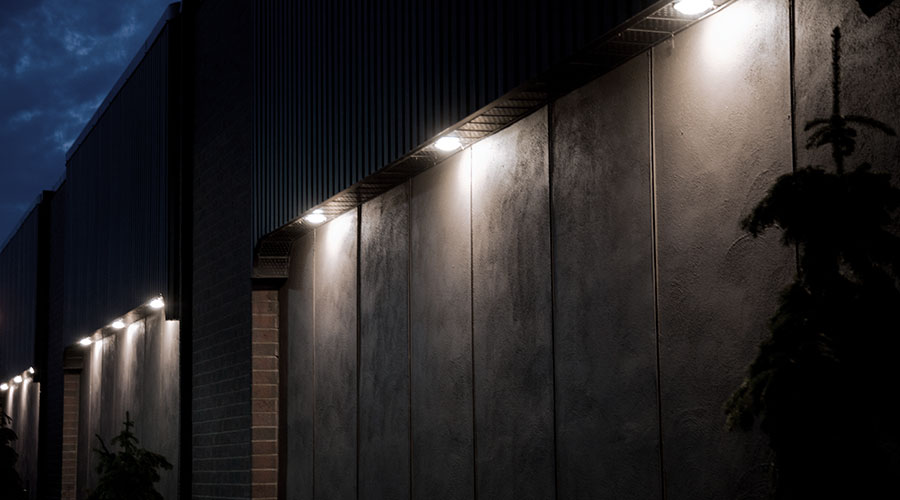
Tips for Selecting the Right Color Temperature
Selecting the perfect landscape lighting color temperature can make or break the ambiance of your outdoor space. With a variety of options available, it’s essential to know how to match your lighting to the intended use and aesthetic.
Here, we’ll provide practical tips to help you choose the right color temperature that complements your landscape design.
- Consider the Purpose of the Space: Think about how each area will be used when considering outdoor lighting color temperature. Spaces meant for relaxation and entertainment may benefit from warmer tones, while areas intended to showcase details or provide security may require cooler lighting.
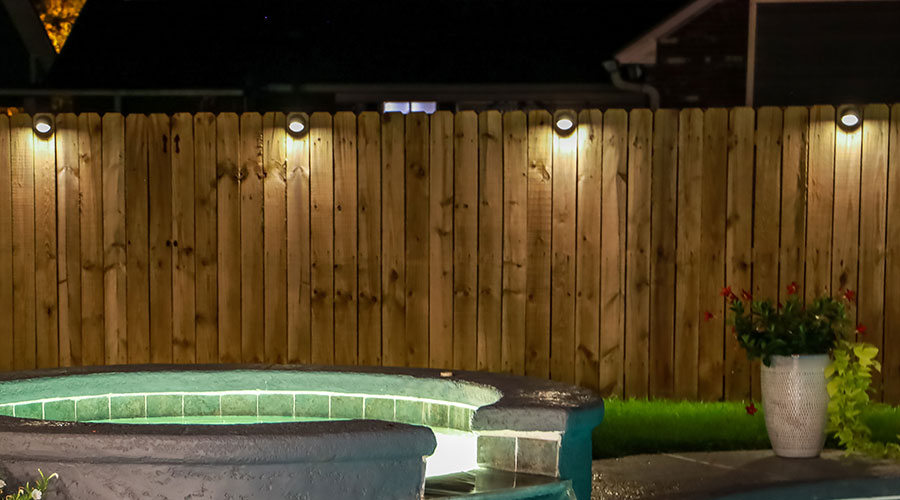
- Layer Your Lighting: Combine different color temperatures to create depth and interest in your landscape. For example, warm lights for garden beds combined with cooler lights for water features can create a dynamic and visually appealing outdoor space.
- Test Before Committing: Before making a final decision, try out different color temperatures in your space. Many LED lights offer adjustable color temperatures, allowing you to experiment with different tones until you find the perfect match.
- Coordinate with Interior Lighting: If your landscape lighting is visible from inside your home, consider coordinating the color temperature with your interior lighting. This creates a seamless transition between indoor and outdoor spaces, enhancing your home’s overall flow and feel.
Advances in LED Technology and Color Temperature
The advent of LED lighting has revolutionized the way we approach color temperature for exterior lighting. Modern LED lights offer a broader spectrum of temperatures and even the ability to adjust the color temperature with smart controls. This flexibility allows homeowners and designers to tailor their lighting to specific occasions, moods, or seasonal changes.
- Tunable White LEDs: LED lights allow you to adjust the color temperature on demand. For example, you can choose a warm white for a summer evening or switch to a cooler white for a winter gathering, providing ultimate control over your outdoor lighting color temperature. For example, choose a warm white for a summer evening or switch to a cooler white for a winter gathering, creating the perfect ambiance for any outdoor setting.
- RGBW LEDs: RGBW (Red, Green, Blue, White) LEDs add an extra layer of customization by allowing you to mix colors, including whites, to achieve the desired color temperature for your outside lighting. This feature is particularly useful for festive occasions or when you want to make a bold statement with your landscape lighting.
Color Temperature: Common Mistakes to Avoid
Choosing the right color temperature for outdoor lighting is crucial for achieving the desired ambiance in your landscape lighting. However, several common mistakes can undermine your efforts, from overly harsh lighting to ignoring the surrounding environment.
Let’s explore these pitfalls and how to avoid them to ensure your outdoor space looks its best.
- Overly Cool Lighting: Using too much cool white light in a residential setting can create a harsh and unwelcoming atmosphere. Cool lighting is best reserved for highlighting specific features rather than general lighting.
- Ignoring the Surroundings: Failing to consider the surrounding environment can result in lighting that clashes with the natural elements or existing architecture. When selecting the best color temperature for outdoor lights, consider the materials and colors of your landscape when selecting a color temperature.
- Uniform Lighting: While consistency is important, using the same color temperature across your entire landscape can make the space feel flat and monotonous. Mix different color temperatures to create a layered, dynamic look.
Light Your Home with the Right Color Temperature
Understanding and selecting the best color temperature for your landscape lighting is vital in creating an outdoor space that is not only functional but also aesthetically pleasing. Whether you prefer the warm, inviting glow of 2700K or the crisp, modern feel of 5000K, the choice of color temperature can transform your landscape into a nighttime oasis.
By testing your options, leveraging the flexibility of modern LED technology, and thoughtfully considering how different color temperatures affect various landscape elements, you can achieve a harmonious and visually captivating outdoor environment that enhances the beauty of your home and garden.
Are you enjoying our guides and tips? Join our Insider list and check out the different landscape lighting options that we have to offer.
